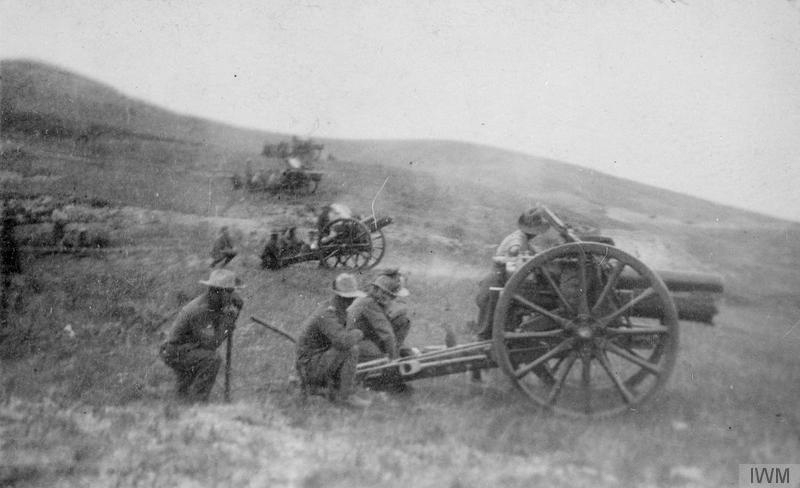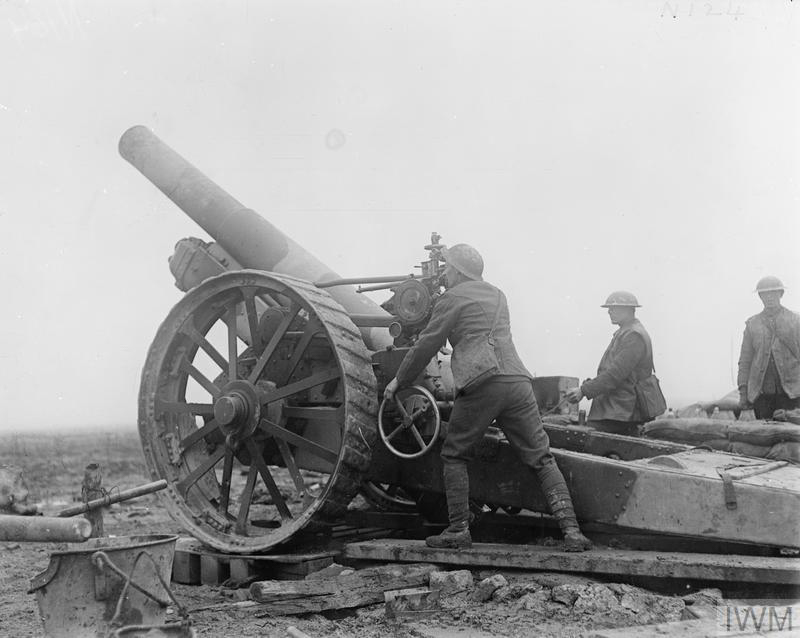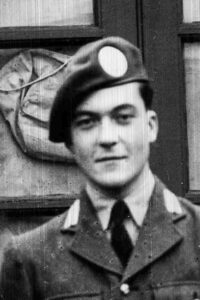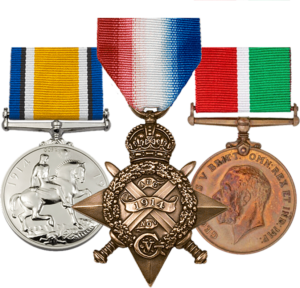John enlisted into the Royal Field Artillery at Woolwich on 11 December 1915 with service number 168447. This was less than two months after his brother had been killed fighting in France. He was 23 years and 10 months old and described as 5 feet 11 inches tall and of fair physical development, weighing 141 lbs, with 6/9 vision in both blue eyes and a slight heart defect. He was mobilised in September 1916 and posted to No.4 Depot in Woolwich with the rank of Gunner, quickly moving on to the 43rd Reserve Battery of 3C Reserve Brigade at Deepcut. It was likely that this was a training unit. He was promoted to Acting Bombardier in December.
In January, John was posted to join a minor campaign happening in Salonika, Greece. A letter in his record from the Command School for Physical and Bayonet Training at Gosport dated 10 February 1917 recommended that he be sent to the 21 days instructional course at Aldershot on the next opportunity. Upon returning from Greece, he therefore joined the School of Instruction on 31 March 1917. After successfully completing the training, John re-joined the 43rd Reserve Battery in mid-May. He continued to serve at home, remaining a Gunner but being paid as a Lance Bombardier.

In April 1918 John was posted to D Battery of the 48th Brigade, Royal Field Artillery. At the start of May the Brigade moved to Arras before settling at Maroc near Lens on the 9th. This would be their home for the next two months, which was a relatively quiet time where they laid down the occasional barrage and suffered a few casualties. On 9 July they moved about 20 miles north to Loos near Lille. They were more heavily engaged here, putting up diary harassing barrages along with more specific requests for fire support. They suffered just a few causalities in return. At the end of August, they moved back to Lens where they undertook similar duties until the middle of October when they appeared to become more mobile in support of the rapidly advancing army – advancing some 70 miles east over the few weeks before the Armistice, when they found themselves at Eugnies near Mons.
During this time John was once again promoted to acting Lance Bombardier, and then to acting Corporal in May 1919. The Brigade remained in France for several months following the Armistice, being billeted at Tournai on the border with Belgium. John finally returned home in June 1919, embarking at Antwerp. A medical examination undertaken showed that he had suffered no disability other than his minor heart condition. He was permanently promoted to Corporal two days later, and in July 1919 transferred into Class Z Army Reserve.
Units
- 43rd Reserve Battery, Royal Field Artillery (1916-1918)
- 48th Brigade, Royal Field Artillery (1918)
Medals





